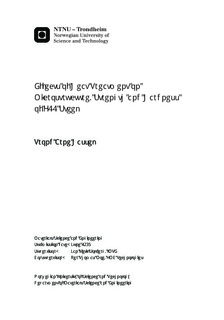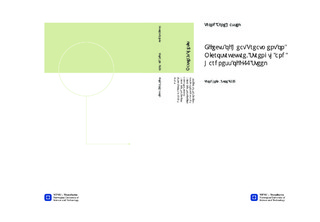| dc.description.abstract | In offshore oil exploitation, the riser is an important component, linking the installations on the seabed to the surface installations. This master's thesis has looked at the possibility of implementing forge welding in riser production. The focus has been on mechanical properties in riser steel subjected to the thermal effects from forge welding. Continuing the findings from the forge welding investigations, relations between strength and hardness has been established.Thermal simulation of forge welding was carried out. The material was then tempered at 650\textdegree C for respectively 1, 3 and 6 hours. Hardness profiles were measured across the HAZ, as well as tensile testing of the base material. Tempering for 1 hour produced HAZ hardness below 275 HV, but 6 hours of tempering was necessary to bring the hardness below 250 HV. Tensile testing confirmed suspicions from prior work about provided material not fulfilling the requirements for yield and tensile strength.The establishment of a strength-hardness relationship started with microstructural investigations. These included light microscopy, microhardness measurements, SEM imaging and EDS analysis to determine the effect of prolonged tempering, as well as to identify the microstructures formed by various heat treatments. It was found that as-quenched material contained a martensitic structure with no visible carbides. Material tempered for a short period of time contained lath shaped cementite, while alloy carbides of chromium and molybdenum formed in material subjected to prolonged tempering. Material subjected to controlled cooling or isothermal heat treatment at 600\textdegree C and 700\textdegree C formed ferrite-pearlite structures. However, instead of lamellar pearlite, a form of degenerate pearlite was observed in two out of three samples.A comparison of different tempering temperatures was done by using the Hollomon-Jaffe parameter to determine tempering effect. This study proved the Hollomon-Jaffe relationship valid for tempering of F22 steel, since the same hardness reduction was achieved for tempering cycles with equal tempering parameter. The comparison also accentuated the strong dependence of temperature on achieved tempering effect.Tensile testing and corresponding hardness measurements were used for determining linear regressions between strength and hardness for F22 steel. Regressions for both yield- and tensile strength were found. When compared to already existing relations between strength and hardness, the new models proved more accurate for the F22 steel. However, approximating tensile strength proved more precise than approximating yield strength due to plastic deformation and work hardening. | nb_NO |

